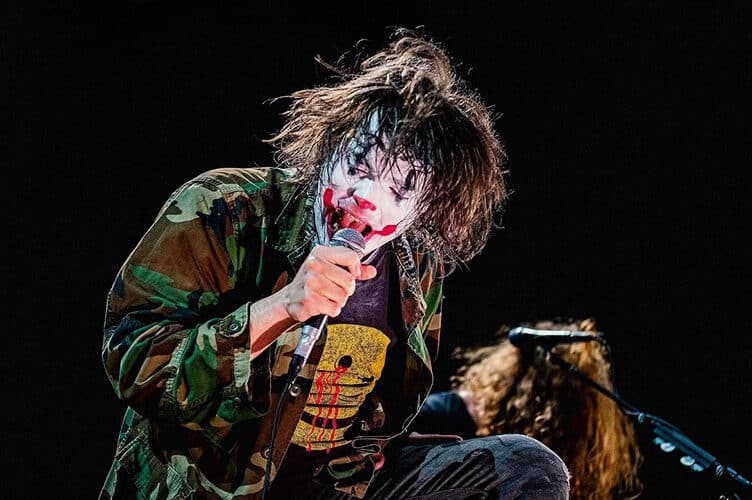VINTAGE t-shirts, patchwork jackets, and a room full of people dressed to the nines. Those are the first things we saw when we visited White Banana last 23rd of July for Season Pass’s Community Flea Market, which they arrange randomly every few weeks as a means of bringing sellers together to sell vintage items for reasonable prices.
“Season Pass started as a streetwear store, then slowly transitioned into a vintage store in early 2019,” explained Lean Torres, the owner of Season Pass and the person that makes all of these flea markets possible.
“The Community Flea Market was once called Community Sale, where a group of friends of the store gathers every month at our store to market what they’re selling. We then started accepting sellers outside our circle, and reached out on different markets and made it more accessible for everyone.”
As Torres’s Community Sale continued to grow, it soon turned into the Flea Market that is now known and loved by many, labeled as such because everything being sold is secondhand.
Torres admits that the gathering started as a way to help his friends market their items, explaining that he took on the role to become the host for such events to lend them a hand.
“Season Pass made the event back in 2019 and is still ongoing, just trial and error on everything we did; experience made everything possible for our events to become what it is now,” Torres said.

A tight-knit community
Regardless of if you’ve been a seller since 2019 or have only just started this year, there’s one consensus from everyone we at republicasia interviewed: the community within this flea market is by no means a toxic, grueling place for competition.
If anything, 25-year-old Red Moraleta, a merchant of Worn Expressions and Brainspread, feels that it’s become a support system wherein everyone is a friend to everyone.
“It’s a friendly community; people are always looking out for each other,” explained Moraleta, who’s been around since the very start and also mans the social media accounts of Season Pass. He likens it to the trusty concept of bayanihan, evident in a large part of Philippine culture.
“We help lift each other’s houses; we hope everyone does good.”
If people aren’t buying from one another, he says, they’re at least promoting each other’s items. Being in an environment where over 40 merchants peacefully co-exist with one another may seem like an impossible feat, but that’s exactly what’s to be expected from these flea markets.
Even 23-year-old Bos Obsanga of Afro Heats, who’s only started selling with Season Pass this 2023, feels the same way.
He explained the feeling, discussing just how open sellers are with one another: “From time to time, nagkakaroon kami ng connection, hindi yung magiging stranger [lang].”
He says that through his fellow sellers, he’s managed to learn a lot about the business, and even jokes that he’s unlocked new parts of his personality in his time selling with everyone.
And it’s not all talk, either.
28-year-old Joshua Antonio, co-owner of Litstagram, recounts one time wherein he’d been manning a flea market event in Pampanga when it started to rain. And instead of merely holding their own, it seemed almost like second nature to help one another.
In the haze of rain and angry wind, each seller went from shop to shop, helping each other pack up their items just so nothing would get wet.
And even when it comes to sales, the well-known Filipino quality of the crab mentality seems non-existent here.
Luis Miguel Esguerra, 33, runs the shop All In Your Head. He’s a frequent participant of flea markets and has participated in at least six of them since he started joining last year.
Esguerra says that sellers often hang their items in other shops, depending on where they feel they’d sell better.
“You can have it hanged and then they’ll just tell you, “Oh, I sold the shirt, here’s your profit,” and then if you want, just give them a bonus,” he shared.
“We always help each other talaga. That’s the best thing I know [about] the Season Pass community.”
It isn’t a shock, then, to find that so many of the customers who frequent these events come because of the kind smiles of sellers and the added cool factor of fellow buyers. Of those that we interviewed, the main adjectives used to describe the sellers at these flea markets were kind, accommodating, and of course, extremely stylish.
2nd-year De La Salle University student Joseph Miguel Tubalado, 19, said: “They’re nice, hospitable, [and] dress very good… they really reflect what they sell.”
Pauline Anne Fugen, 20, often frequents thrift stores and events, claiming that she goes as often as she can.
While one factor of this frequency is that she can get items that she feels are more curated for what she wants, another reason is the vibe. She explains that she loves mingling with other people at events like this and that the look alone of other people draws her in.
“I think communities that revolve around thrifting, they’re more like-minded; when you go to malls, it’s just a wide array of people, [and] you don’t really find people that you might wanna be friends with or you think are cool,” the 2nd-year Asia Pacific University student shared.

Flea markets over fast fashion
Given the wide variety of sellers at these flea markets, it’s no surprise that they all have different ways of getting their items. Some, like Antonio and his business partner Anne Soriano, get their clothes by going to other thrift stores or even getting them from online buy-and-sell auctions.
Others, like Esguerra, outsource their items, or go to collectors, which they feel is how one can get the best items possible.
There are also sellers like Obsanga who rework their items, either cropping them or turning them into upcycled bags, or those like Moraleta who do go to thrift stores and upcycle clothes as well, but also sell their own merchandise through their streetwear brand, Worn Expressions.
There’s a wide variety of items being sold at these events. From anime tees to stuffed toys to brands like Carhartt and Vivienne Westwood simply strewn about casually, there is – quite literally – something for everyone.
So regardless if you’re looking for a long skirt and a patchwork tee like Tricia Jimenez or vintage t-shirts like John Cruz, all you have to do is move toward the next shop if you haven’t yet found what you’re looking for.
As a first-timer at the Community Flea Market, 16-year-old 12th-grader Jimenez describes the whole event as extremely fulfilling, because you get to explore and find new things you wouldn’t normally find anywhere else.
The De La Salle Greenhills student was accompanied by her friend, 16-year-old Rian Esguerra, who shared the same sentiments. To him, buying from a flea market was an experience like no other.
“It’s more sustainable because you’re getting secondhand clothing, and you’re picking pieces you can wear for much longer than if you bought [from] fast fashion,” he explained.
Tubalado and his friend, 19-year-old DLSU 1st-year Kyle Escario, often prefer to buy from flea markets because they feel that the pieces there fit their style better than clothes they’d be able to buy from the mall.
He explains that when it comes to fast fashion pieces, practically everyone is selling them, and as a result, practically everyone is wearing them too, which takes away from the curated, unique feel you can only get from an event like that of Season Pass’s, where everything is different.
And even sellers share the same sentiment, down from the clothes that they sell to the people they sell them to.
Obsanga shares that the clothes that he gets are all chosen with love. He chooses his items by deciding if they’re worth the hard-earned money and happiness of their buyers, which is a mantra that we can only hope all sellers today can have.
“Madalas yung mga buyer, magpapasalamat sila sa’yo, tapos mararamdaman mo na totoo yung saya nila,” he said.
“Nae-express nila yung sarili nila sa pagsuot nila ng damit… sobrang laking bagay yun.”

Coming soon
This coming July 30, the second volume of Second Chances: Vintage Community Flea Market will be coming to the Hub, located at 413 Escolta Street at Binondo, Manila from 10 AM up until 6 PM.
Items at the Community Flea Market come with a range of different prices. Some sellers price their items at PHP 20, and others have items that go as high as PHP 10, 000.
As such, the customers that come usually prepare for these events by preparing as little as PHP 1, 000, or as high as PHP 5 – 7, 000.
Ultimately, how much you wish to bring is up to you. For us, we were able to buy items for as low as PHP 300. For just that amount, we managed to leave with two shirts in hand already.
And if you’ve got the guts for it, the sellers at these events are pretty flexible when it comes to their prices too, as such is the tawad culture often found in any thrift store in the Philippines. For us, for example, we managed to get a PHP 400 dress for 50 less after speaking with the vendor.
Torres has created something truly special within the Philippine market – an avenue not just for sustainability, but one where like-minded individuals feel they can come together to display similar fashion styles as well as creative ideas.
These events are no longer just a mere place of buying and selling; to many, they’ve begun to feel like home.
“Mukha lang siyang individual yung natutulong niya pero kung titignan mo siya sa wider view, sobrang laki ng naco-contribute nito sa environment [pati] sa mga seller,” said Obsanga with a warm smile on his face.
“Yung impluwensiya ni Boss Lean, impluwensiya sa’kin, impluwensiya ko sa iba… sobrang wide talaga siya. Mukha lang siyang maliit, pero sobrang laking bagay talaga niya.”

How useful was this post?
Click on a star to rate it!
Average rating 0 / 5. Vote count: 0
No votes so far! Be the first to rate this post.
We are sorry that this post was not useful for you!
Let us improve this post!
Tell us how we can improve this post?









